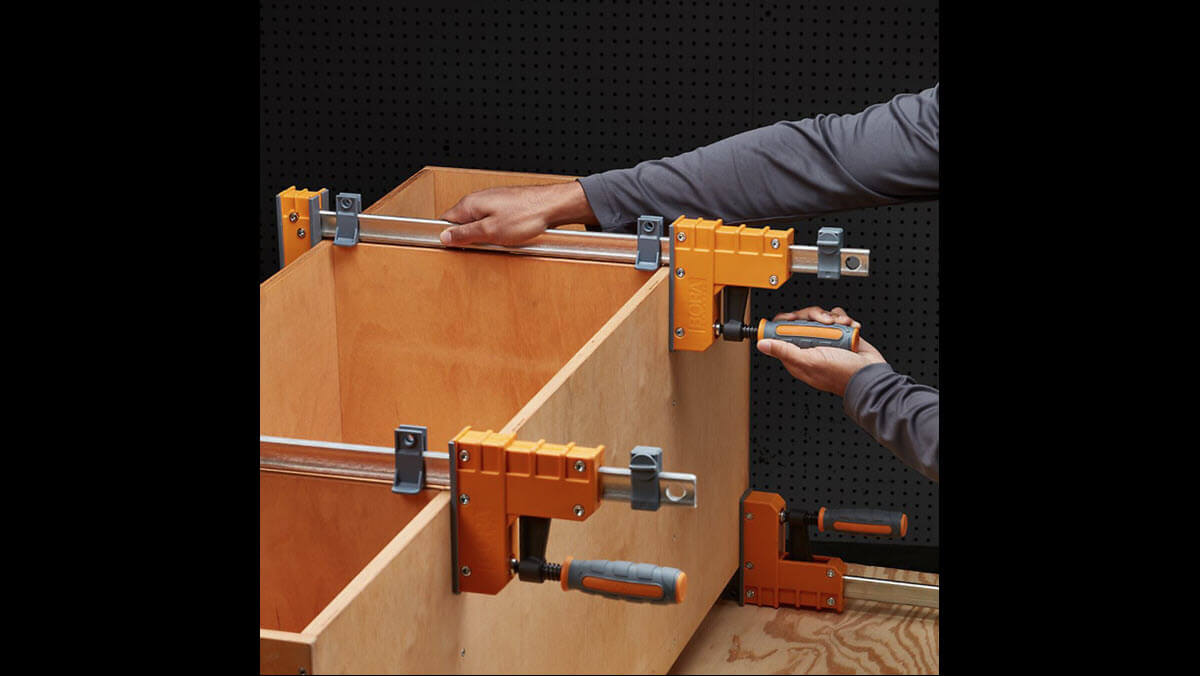When it comes to woodworking, metalworking, or any DIY project, having the right tools is crucial. One of the most essential tools in any workshop is a clamping tool. Clamping tools are designed to hold objects in place while you work on them, providing stability and precision. With so many different types of clamping tools available, choosing the right one can be overwhelming. In this article, we’ll dive into everything you need to know about clamping tools and how to choose the right one for your project.
Types of Clamping Tools
There are several types of clamping tools available on the market, each with its unique features and benefits. Here’s a breakdown of some of the most common types of clamping tools:
1. C-Clamps: C-clamps are one of the most common types of clamping tools used in woodworking and metalworking. They are shaped like a “C” and have a screw mechanism that allows you to adjust the opening size. C-clamps come in various sizes and are ideal for holding small to medium-sized objects.
2. Bar Clamps: Bar clamps consist of two bars connected by a screw mechanism. They are ideal for larger projects as they can hold bigger objects securely. Bar clamps come in various lengths ranging from 6 inches to over 100 inches.
3. Pipe Clamps: Pipe clamps consist of a pipe that acts as a bar and has two jaws attached at either end. These jaws can be adjusted using a screw mechanism to fit various object sizes. Pipe clamps are ideal for holding irregularly shaped objects.
4. Spring Clamps: Spring clamps use spring pressure to hold objects in place. They are lightweight and portable, making them ideal for smaller projects or when working in tight spaces.
5. Hand Screw Clamps: Hand screw clamps consist of two wooden jaws connected by two threaded spindles. These spindles can be adjusted to fit various object sizes and shapes. Hand screw clamps are ideal for delicate projects as they provide even pressure without damaging the object.
Choosing the Right Clamping Tool
When choosing a clamping tool, several factors should be considered to ensure you get the right one for your project. Here are some things to keep in mind:
1. Size: Consider the size of the object you need to hold in place. Choose a clamping tool that can accommodate the size of your object.
2. Material: The material of your object should also be considered when choosing a clamping tool. For example, if you’re working with wood, you may want to choose a clamp with soft jaw pads to prevent damage.
3. Pressure: Different clamping tools provide different amounts of pressure. Consider how much pressure you need for your project and choose a clamp accordingly.
4. Accessibility: If you’re working in tight spaces or difficult-to-reach areas, consider using a spring clamp or hand screw clamp that is lightweight and portable.
5. Durability: Look for clamps made from high-quality materials that will last long and withstand wear and tear.
Tips for Using Clamping Tools
Once you’ve chosen the right clamping tool for your project, here are some tips on how to use them effectively:
1. Always clean your clamps before using them to prevent rust and dirt buildup.
2. Make sure your objects are properly aligned before clamping them into place.
3. Use protective padding on your clamps to prevent damage to your objects.
4. Apply equal pressure on both sides of your objects to prevent warping or bending.
5. Avoid over-tightening your clamps as this can cause damage to both the clamp and object.
6. Always release your clamps slowly and carefully to avoid sudden movements that can cause damage.
Conclusion
In conclusion, clamping tools are essential for any woodworking, metalworking, or DIY project. With so many different types of clamping tools available, choosing the right one can be overwhelming. By considering factors such as size, material, pressure, accessibility, and durability, you can choose the right clamping tool for your project. Remember to use your clamps effectively by properly aligning your objects, using protective padding, applying equal pressure, avoiding over-tightening, and releasing them slowly and carefully.
Wiki Reference: https://en.wikipedia.org/wiki/Clamp_(tool)




